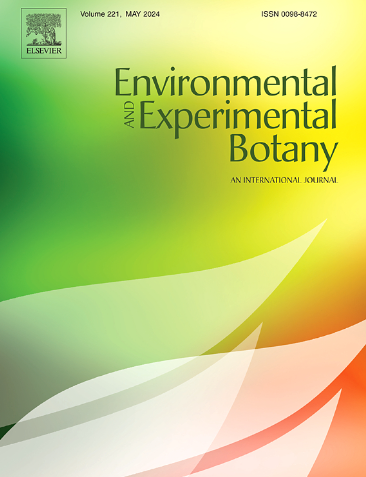Metabolomic changes in Arabidopsis thaliana exposed to extracellular self- and nonself-DNA: A reversible effect
IF 4.7
2区 生物学
Q2 ENVIRONMENTAL SCIENCES
引用次数: 0
Abstract
Untargeted metabolomics analysis was used to assess at molecular level the plant reactions to extracellular DNA (exDNA) exposure. Thus, the effects on the metabolites profile of A. thaliana after exposure to self- and nonself-DNA have been investigated by NMR, LC-MS and chemometrics analyses. Results confirmed that self-DNA significantly induces the accumulation of different RNA constituents along with their cyclic analogues, in form of cyclic dimers, as well as methylated forms, increasing only in the self-DNA treatment. In addition, a deeper investigation of these samples showed the increase of several metabolites belonging to the classes of indoles, flavonoids, thiazoles and isothiocyanates. All these metabolites are known to be involved in plant growth and defence. Among these, isothiocyanates are known to affect the A. thaliana cell cycle with accumulation of cells in S-phase which is consistent with observations of self-DNA inhibition in other model organisms. Noteworthy, the early metabolomic changes induced by self-DNA were shown to be reversible when followed by a second exposure to extracellular nonself-DNA. These results highlight the relevance of the environmental balance between self- and nonself-DNA in the regulation of plant metabolism.
暴露于细胞外自我和非自我dna的拟南芥代谢组学变化:可逆效应
利用非靶向代谢组学分析在分子水平上评估植物对细胞外DNA (exDNA)暴露的反应。因此,通过核磁共振、LC-MS和化学计量学分析,研究了暴露于自我和非自我dna后对拟南芥代谢产物谱的影响。结果证实,自体dna显著诱导不同RNA成分及其环状类似物的积累,以环状二聚体的形式,以及甲基化形式,仅在自体dna处理中增加。此外,对这些样品的深入调查显示,属于吲哚类、类黄酮类、噻唑类和异硫氰酸酯类的几种代谢物增加。已知所有这些代谢物都与植物生长和防御有关。其中,已知异硫氰酸酯会影响拟南芥细胞周期,使细胞在s期积累,这与其他模式生物对自身dna抑制的观察结果一致。值得注意的是,当第二次暴露于细胞外非自体dna时,自体dna诱导的早期代谢组学变化是可逆的。这些结果强调了自我和非自我dna之间的环境平衡在植物代谢调节中的相关性。
本文章由计算机程序翻译,如有差异,请以英文原文为准。
求助全文
约1分钟内获得全文
求助全文
来源期刊

Environmental and Experimental Botany
环境科学-环境科学
CiteScore
9.30
自引率
5.30%
发文量
342
审稿时长
26 days
期刊介绍:
Environmental and Experimental Botany (EEB) publishes research papers on the physical, chemical, biological, molecular mechanisms and processes involved in the responses of plants to their environment.
In addition to research papers, the journal includes review articles. Submission is in agreement with the Editors-in-Chief.
The Journal also publishes special issues which are built by invited guest editors and are related to the main themes of EEB.
The areas covered by the Journal include:
(1) Responses of plants to heavy metals and pollutants
(2) Plant/water interactions (salinity, drought, flooding)
(3) Responses of plants to radiations ranging from UV-B to infrared
(4) Plant/atmosphere relations (ozone, CO2 , temperature)
(5) Global change impacts on plant ecophysiology
(6) Biotic interactions involving environmental factors.
 求助内容:
求助内容: 应助结果提醒方式:
应助结果提醒方式:


